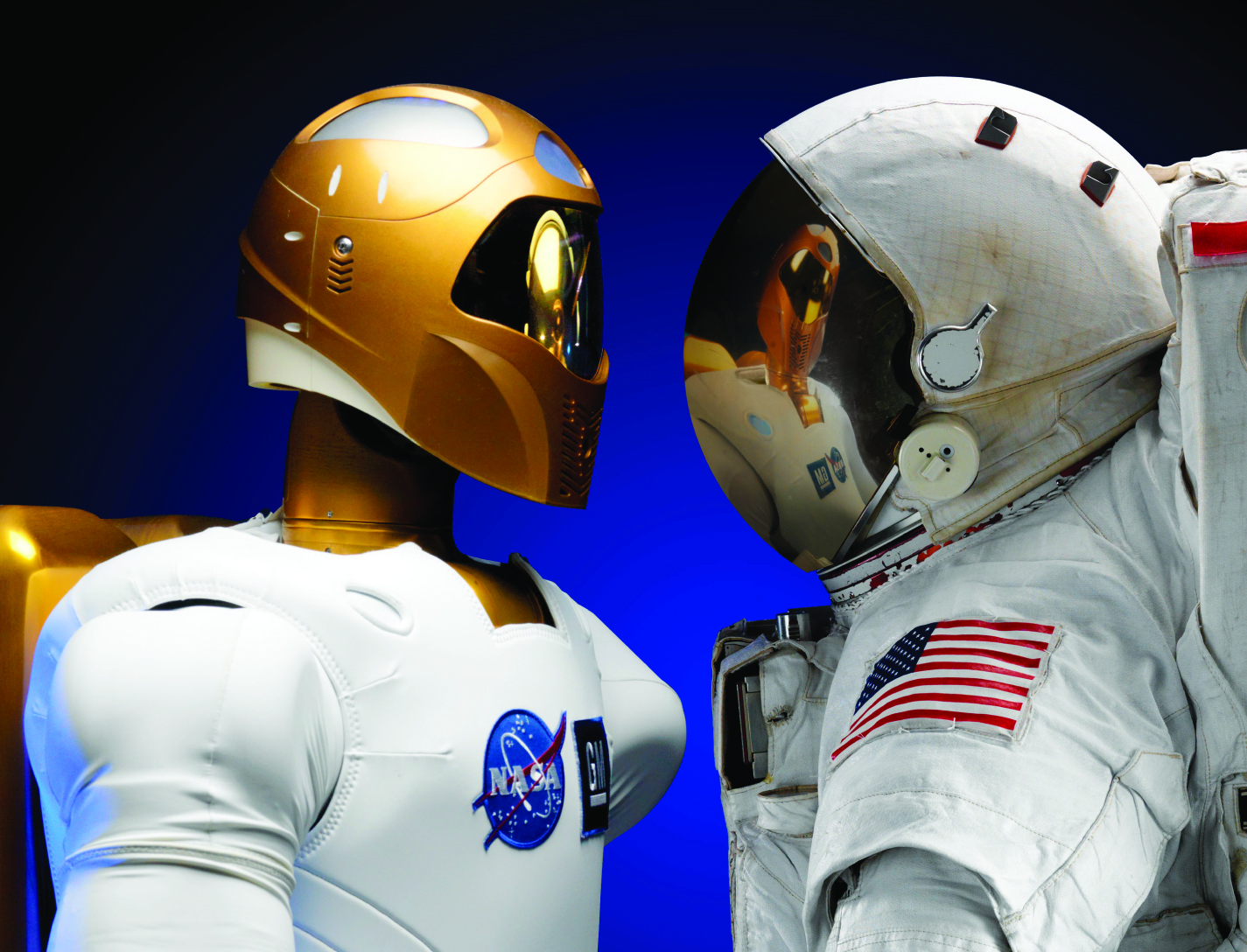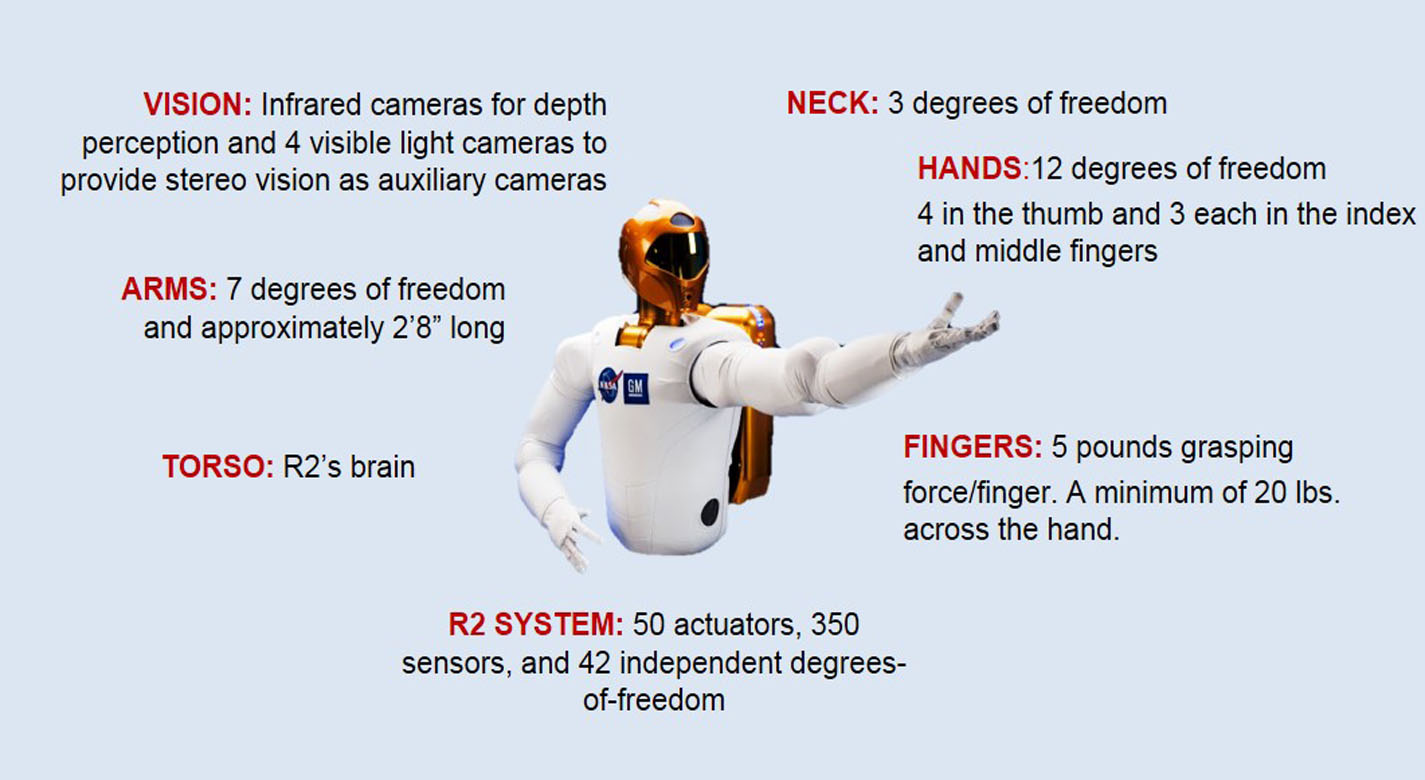Robonaut 2 Technologies
robotics automation and control
Robonaut 2 Technologies (MSC-TOPS-38)
For use in logistics and distribution, medical and industrial robotics, and hazardous, toxic, or remote
Overview
Researchers at NASA's Johnson Space Center (JSC), in collaboration with General Motors and Oceaneering, have designed a state-of-the-art, highly dexterous, humanoid robot: Robonaut 2 (R2). R2 is made up of multiple component technologies and systems: vision systems, image recognition systems, sensor integrations, tendon hands, control algorithms, and much more. R2's nearly 50 patented and patent-pending technologies have the potential to be game-changers in multiple industries, including logistics and distribution, medical and industrial robotics, as well as hazardous, toxic, or remote environments.
This NASA Technology is available for your company to license and develop into a commercial product. NASA does not manufacture products for commercial sale.
The Technology
While robotic technologies are already being used in several industries like logistics and distribution, R2 allows for much more complex and delicate operations that require a more sophisticated level of interaction. In terms of handling inventory, R2's dexterity would allow it to handle a multitude of items, including delicate ones. In addition, it can perform in close proximity to humans, allowing for the use of robotics in areas where it's not currently safe or practical. R2 is equipped to navigate obstacles, fixed or moving and has the capability of handling frequent, random, and unexpected movement of people, products, or equipment as well as items that vary in shape, weight, and fragility. The robot encompasses four elemental systems.
Hands: R2's unprecedented dexterity in its hands allows it to use many of the same tools that astronauts and industry workers currently use, significantly reducing the need for specialized tools to perform multiple tasks.
Arms: R2's arms are soft at multiple levels and they have redundant force sensing. R2 can safely work side-by-side with humans.
Sensing and Perception: R2 shares senses similar to humans like the ability to touch and see.
Interface and Control: R2 can function autonomously or it can be controlled by direct teleoperation. When functioning autonomously, R2 understands what to do and how to do it based on sensory input, carrying out tasks in real time.


Benefits
- Dexterous hands
- Touch sensitive
- Able to navigate around obstacles
- Environmentally aware
- Able to work in proximity to co-workers
- Capable of task flexibility
Applications
- Logistics and distribution: Allows for sophisticated level of interaction
- Industrial: Operates equipment and machines designed for humans
- Medical: Handles time-consuming tasks of counting, sorting, inspecting
- Hazardous, toxic, or remote environments: Land mine detection and bomb disposal


